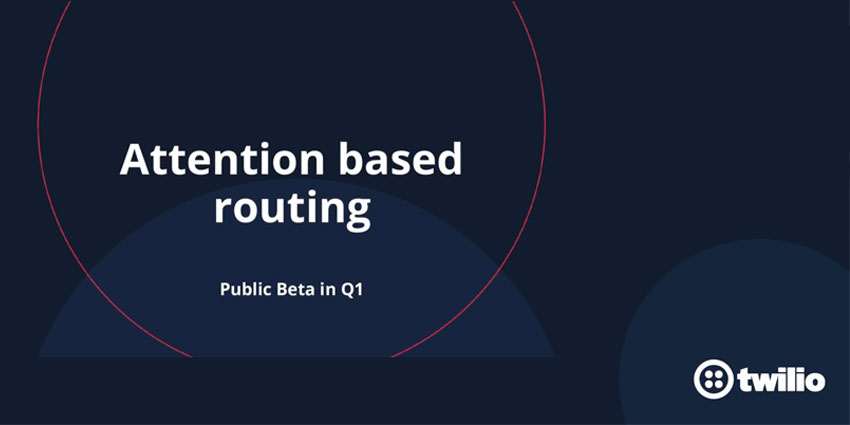Twilio has released attention-based routing for contact centers in a public beta.
Announced during the company’s Q1 2025 release, the new feature will be available for users of Flex, Twilio’s cloud contact center platform.
To understand how the feature works, it’s critical to understand the challenges of an agent working in an omnichannel contact center.
These agents must typically navigate contacts across several different channels.
Some of these contacts (phone/video) will require an agent’s undivided attention, while they can handle others simultaneously (SMS/WhatsApp).
In jumping between these two types of conversation, agents can struggle to prioritize their workloads.
Twilio’s attention-based routing solution aims to address this pain point by allowing organizations to set specific “attention levels” for each channel directly in the console.
So, for example, if a customer contacts a business via SMS, they may route through to an agent handling multiple SMS interactions instead of being assigned to a video agent who is currently occupied.
As such, the customer isn’t left waiting on hold while a video agent finishes their call.
Deployable alongside existing routing methods – such as skills-based or known-agent routing – the tool promises to equip agents with the capacity to handle interactions more quickly.
Moreover, according to Philip Borden, Principal Product Manager of Twilio Flex, attention-based routing will improve the agent experience by helping reps stay focused. He continued:
With Attention-Based Routing, what we’re doing is improving that agent experience to increase productivity and also complementing the existing routing logic that you’re using in your contact center today.
Elsewhere in its Q1 release, Twilio introduced Generative Custom Operators to extract intelligence from customer conversations.
More Routing Experimentation
Twilio isn’t the only major vendor to announce a new routing feature in recent times.
Last year, AWS introduced a new proficiency-based routing feature for Amazon Connect, which allows contact center admins to direct customer interactions based on an agent’s skill level.
Admins can define agent proficiencies – such as language fluency or expertise in handling specific intents – and use these to tailor routing rules for better outcomes and improved customer experiences.
A key component of the feature is “timed routing steps,” which gradually expand routing criteria if the most proficient agents aren’t available, ensuring queries are still answered promptly.
In discussing the new feature, AWS outlined one of the ways in which it can be deployed:
You can set routing criteria where a customer with credit card and auto loan issues can talk to a specialist… If a match is not found in sufficient time, you can relax the credit card requirement and ensure the matching agent can support the customer’s priority of auto loans.
Additionally, Amazon Connect Contact Lens, the platform’s conversational intelligence tool, enhances this system by analyzing agent performance across different contact types.
This helps refine proficiency ratings and improve routing accuracy.
The Future of Routing
The moves from Twilio and AWS suggest that routing experimentation remains a key area of focus throughout contact center space.
Indeed, in a recent series of predictions made by Buster Hansen, Director of Solutions Engineering at Enghouse Interactive, he suggested that routing engines will evolve further over the next five years.
Hansen detailed how the growing pile of data that contact centers now have access to could be leveraged by AI to power the routing engines of tomorrow’s contact centers.
For instance, these engines may use WFM data to identify when an agent’s shift is ending and route them a simple query to ensure they finish on time.
Alternatively, the tools could utilize QA data to identify the types of queries an agent excels at and direct more of those to them, boosting customer satisfaction.







